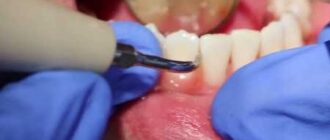Oral facial pain is one of those problems that you may not hear about often, but it impacts millions of people worldwide. From the mundane to the debilitating, this form of pain is often overlooked in favor of more “serious” health conditions. Yet, ask anyone dealing with oral facial pain on a daily basis, and they will tell you it can severely affect quality of life. Let’s dive into what oral facial pain is, the most common causes, and what modern treatments are helping people find relief.
How Common is Oral Facial Pain?
Oral facial pain isn’t a rare issue; it’s actually quite prevalent, affecting around 22% of adults at some point in their lifetime, according to the American Academy of Orofacial Pain. Chronic oral facial pain, lasting more than six months, affects around 7% of the population. This means that, globally, millions of individuals endure discomfort that can vary from mildly annoying to completely incapacitating.
Table: Prevalence of Oral Facial Pain by Age Group
| Age Group | Prevalence (%) |
|---|---|
| 18-30 | 15 |
| 31-45 | 20 |
| 46-60 | 25 |
| 61 and above | 30 |
This condition seems to become more prevalent with age. The reason? Factors such as dental issues, arthritis affecting the temporomandibular joint (TMJ), and changes in muscle elasticity contribute to the rise in complaints as people get older.
Breaking Down the Causes
Oral facial pain can stem from a variety of sources, ranging from dental problems to neurological issues. Let’s break these down:
1. Dental Issues
It should come as no surprise that dental problems are the leading cause of oral facial pain. Conditions such as tooth decay, abscesses, and gum disease are common triggers. Studies show that nearly 80% of adults have had at least one cavity by the age of 35, and around 50% of people over 30 have some form of gum disease. These statistics highlight how prevalent oral health issues are as contributors to facial pain.
2. Temporomandibular Joint Disorders (TMD)
The TMJ is a major player in oral facial pain. Disorders of the TMJ can lead to chronic pain in the jaw, face, and neck. The National Institute of Dental and Craniofacial Research reports that 5-12% of adults in the U.S. experience TMD, with a higher prevalence among women. This disparity may be linked to hormonal factors, as studies indicate a potential link between estrogen levels and increased sensitivity to TMD.
Table: Common Symptoms of TMD and Their Frequency
| Symptom | Frequency (%) |
|---|---|
| Jaw Pain | 70 |
| Clicking or Popping | 50 |
| Limited Jaw Movement | 40 |
| Facial Fatigue | 30 |
3. Neuralgia and Nerve Pain
Another significant cause of oral facial pain is trigeminal neuralgia, a condition that involves sudden, severe facial pain due to issues with the trigeminal nerve. Though rare, affecting about 12 out of 100,000 people annually, trigeminal neuralgia is one of the most intense pain experiences a person can endure. Imagine an electric shock to your cheek happening unpredictably—it’s no wonder this is often called the “suicide disease.”
4. Bruxism (Teeth Grinding)
Bruxism, or teeth grinding, is another cause of oral facial pain that is often ignored until it’s severe. The American Dental Association estimates that around 10-15% of adults grind their teeth regularly, often during sleep, causing pain in the jaw, teeth, and even radiating to the head and neck.
The Emotional Toll of Oral Facial Pain
Pain in the face and jaw isn’t just physical—it’s also deeply emotional. Chronic pain leads to higher rates of depression and anxiety, as well as sleep disturbances. In fact, people suffering from TMD are twice as likely to experience mood disorders compared to those without chronic pain, according to a study published in Pain Medicine Journal in 2021.
Patients often feel isolated, as oral facial pain can be difficult for others to understand or empathize with. Pain that affects speaking, eating, and smiling can result in social withdrawal, further impacting mental health. Dr. Michael Andrews, a pain management specialist, puts it simply: “Oral facial pain isn’t just about the face—it’s about the person as a whole. When you can’t enjoy a meal or talk comfortably, your world shrinks significantly.”
Treatment Trends and What Works
Modern treatment of oral facial pain has evolved, offering hope to many who suffer. Here’s a look at some of the most effective options currently available:
1. Physical Therapy and Jaw Exercises
Physical therapy has become a cornerstone in the treatment of TMD and other jaw-related pain. Guided exercises, such as stretching and strengthening the jaw muscles, help reduce symptoms in about 65% of patients, based on studies conducted by the American Physical Therapy Association.
2. Oral Appliances
For conditions like TMD or bruxism, oral appliances like night guards or splints can significantly reduce pain by aligning the jaw correctly and preventing grinding. These devices, worn while sleeping, have shown to reduce pain in up to 70% of patients over a 6-month period.
3. Medication Options
Pain relief medication such as NSAIDs and muscle relaxants are often prescribed for short-term relief. However, for chronic sufferers, more targeted approaches, like anticonvulsants for neuralgia or low-dose antidepressants, may be used to manage nerve-related pain. It’s important to understand that medications are often a temporary fix and best used in conjunction with other therapies.
4. Botox Injections
One of the more recent treatments gaining popularity is Botox. Originally known for its cosmetic use, Botox can also help relax the muscles around the jaw, offering relief to those with bruxism and TMD. A 2022 clinical trial found that 55% of participants reported a significant reduction in pain following Botox treatment.
Why You Shouldn’t Ignore Oral Facial Pain
Many people delay treatment, assuming that oral facial pain will go away on its own, or because they fear the cost and complexity of treatment. However, left untreated, these issues often become more severe. Dr. Karen White, a maxillofacial surgeon, stresses: “Ignoring oral facial pain can lead to more invasive procedures down the line. Early intervention can prevent a lot of unnecessary suffering.”
Table: Risks of Delayed Treatment for Oral Facial Pain
| Risk | Potential Impact |
|---|---|
| Chronic Pain | Leads to long-term damage |
| Tooth Damage (Bruxism) | Broken or worn teeth |
| Increased Anxiety | Emotional and mental toll |
| Invasive Surgeries | More extensive treatment |
Our Editorial Advice: What Should You Do Next?
Oral facial pain may seem daunting, but early action is crucial. Start with the basics—maintain good oral hygiene, manage stress, and if you grind your teeth, talk to your dentist about a night guard. For those experiencing persistent or severe symptoms, seek out a specialist. Treatments today are more diverse and effective than ever before, from physical therapy to cutting-edge solutions like Botox.
We know it’s easy to put off addressing pain that’s “just a nuisance,” but your health is worth the effort. Remember, the goal isn’t just to reduce the pain; it’s to reclaim your quality of life, your social interactions, and your smile.






